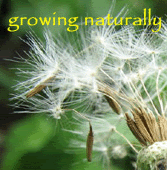
Transforming a simple Apple Sauce into a Winter's Tonic
Tis the season! I have a huge basket of apples that grows everyweek as I pick up my fruit share at the CSA. That was a new addition to the farm this year and I am loving it. A basket of fresh juicy peaches every week- I am getting spoilt!
For the past few years I have been making an herbal apple sauce. I add a handful of Lycii berries, Schizandra (sometimes spelled Schisandra) and some Cinammon. These simple additions create a wonderful winter's health tonic.
Here's why
Lycii berries (Lycium chinense), pronounced Lee-Chee, are members of the Solanaceae (Nightshade) Family and also known as Wolfberry and Goji Berry.
They have many virtues including being an aphrodisiac, a tonic for the blood, energy, liver as well being a rejuvenative. They are a supreme eye food, helping to improve night Blindness, blurred and poor vision. Lycii berries have been used to treat anemia, asthma, bronchial inflammation, diabetes mellitus, erectile dysfunction, pneumonia, tuberculosis, vertigo, weak knees and back (of course it is always best to not self prescribe) . They are highly nutritive, containing beta-carotene, vitamin C, B1 and B2, and linoleic acid. Lycii are said to "brighten the spirit " and prolonged use promotes cheerfulness.
Look for berries with a bright red color. Be sure to get unsulfited berries. Use them like raisins. Add to trail mix. Soak them to make smoothies.
PLEASE NOTE! "Gojii berry" and Lycii berry are virtually the same, with the only discernable difference is that Gojii is usually a high altitude strain of Lycium and is commonly found in the Himalayas, Nepal, Tibet, etc., whereas Lycii berry is the more common variety found in lowland areas. Medicinally the are nearly the same with only minor differences in chemical structure.
Schizandra, also spelled Schisandra, is also known by the names Magnolia Vine and Fruit Of Five Flavors. Schizandra is a woody vine with numerous clusters of tiny, bright red berries. It is found throughout northern and northeast China and the adjacent regions of Russia and Korea. The fully ripe, sun-dried fruit is used medicinally. It has sour, sweet, salty, hot, and bitter tastes. This unusual combination of flavors is reflected in Schizandra’s Chinese name "wu-wei-zi", meaning “five taste fruit". Schizandra is listed among China's most important herbs. Herbalists use Schizandra for coughs, night sweats, insomnia, thirst, and physical exhaustion. Schizandra is currently popular worldwide as a tonic, and in Asia as a food source. Schizandra Berry helps the body adapt to stress and nourishes the nervous system. Modern research suggests that lignans in Schizandra regenerate liver tissue damaged by harmful influences such as viral hepatitis and alcohol. Schizandra fruit has an adaptogenic action ( improve work performance, build strength, and help to reduce fatigue), much like the herb Ginseng, but with weaker effects.
In China, a few berries are chewed daily for 100 days in a row as a tonic to improve coordination and concentration!
And even common Cinnamon (inner bark of a tropical evergreen tree). Maude Grieves (in her herbal "bible" A Modern Herbal”) Lists it as a “Carminative, astringent, stimulant, antiseptic; more powerful as a local than as a general stimulant.” The curative properties of Cinnamon are just as numerous today. We can consider Cinnamon beneficial for any of the following: Appetite Loss, Bronchitis, Colds, Fever, Cough, Indigestion, To improve digestion, Sore Throat, Tendency to infection
Diarrhea .
So try out this recipe and become a kitchen herbalist!









No comments:
Post a Comment